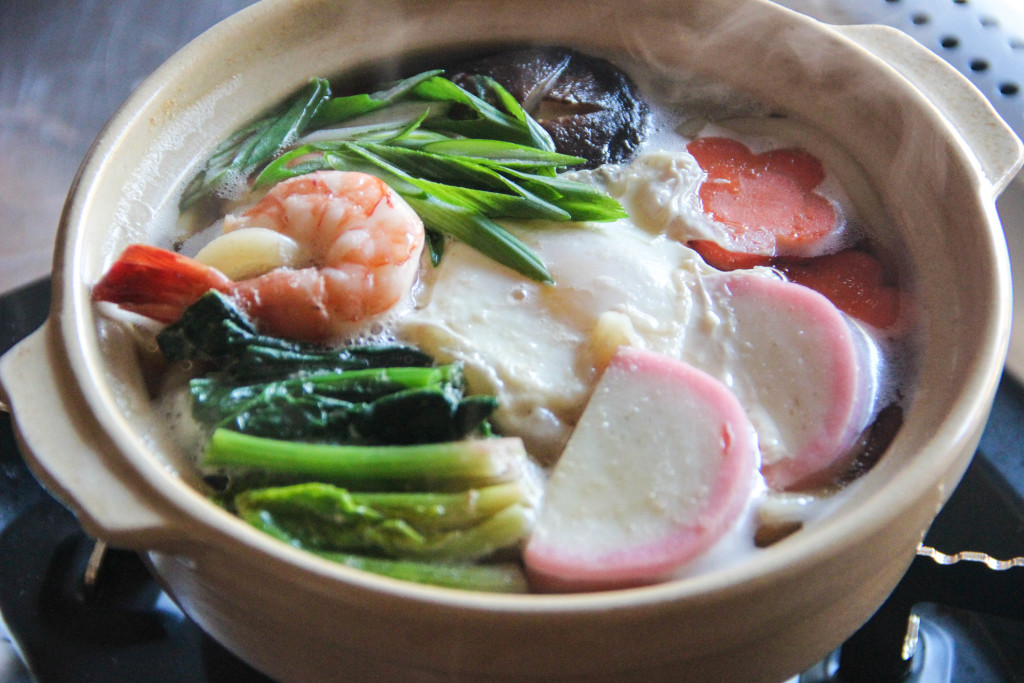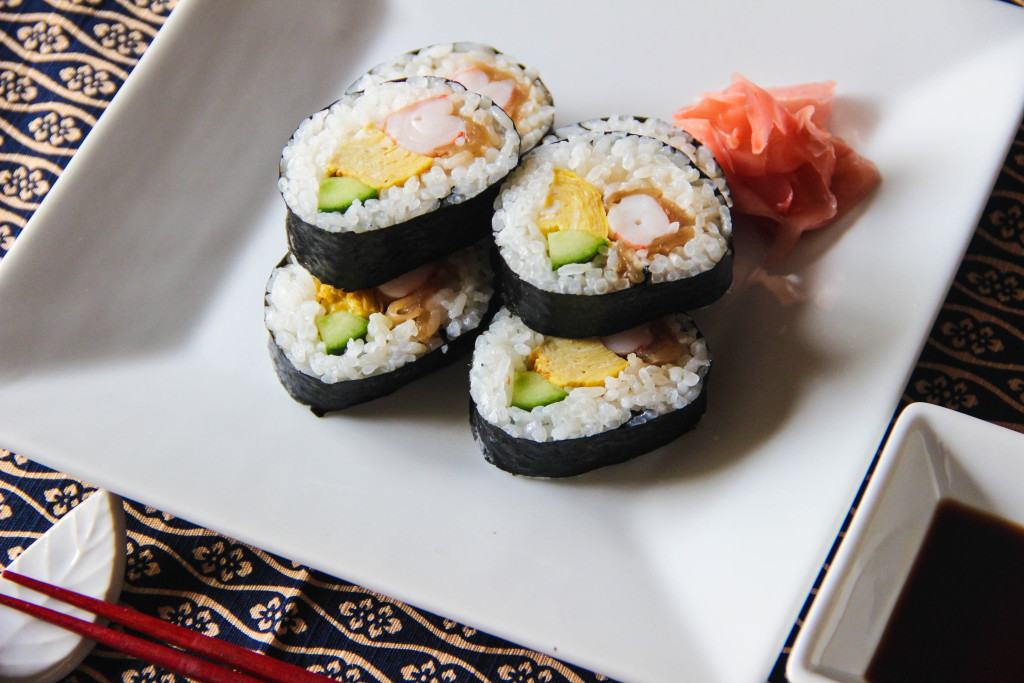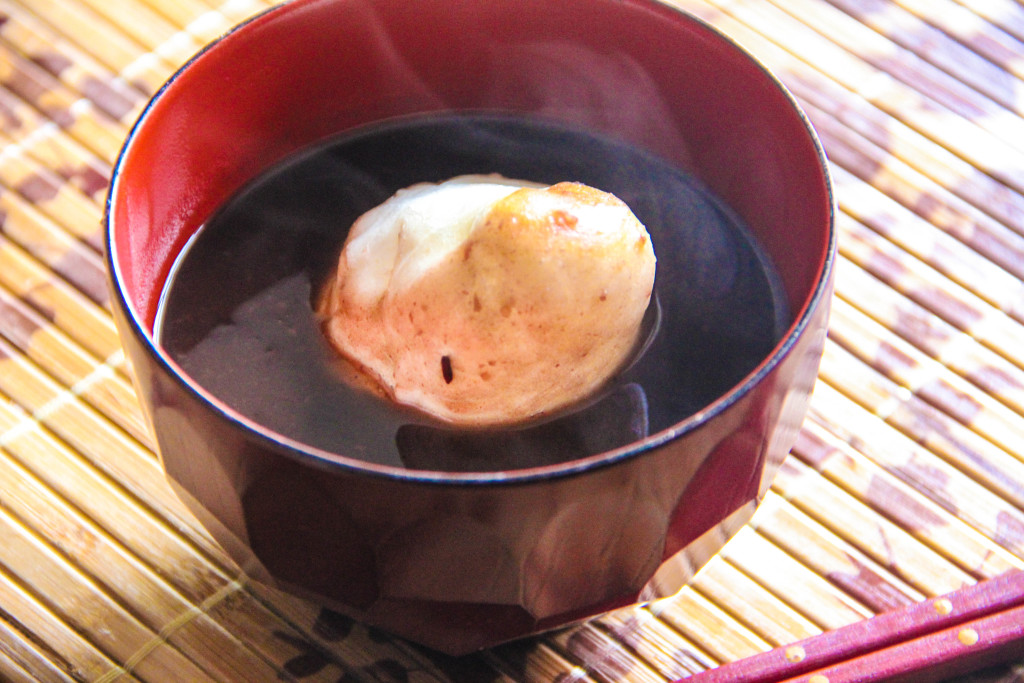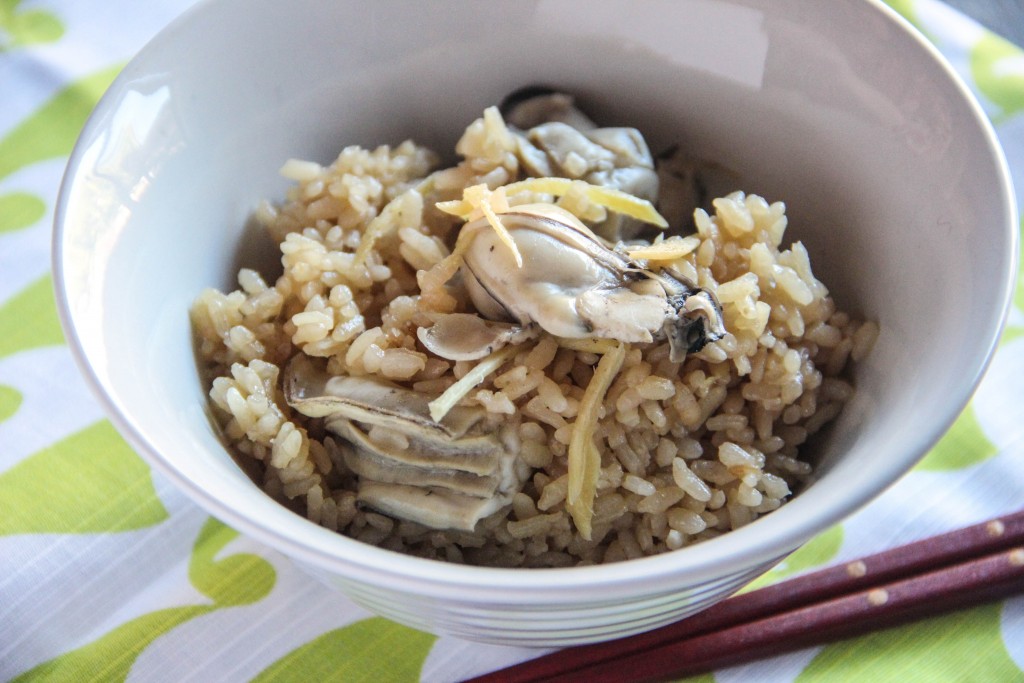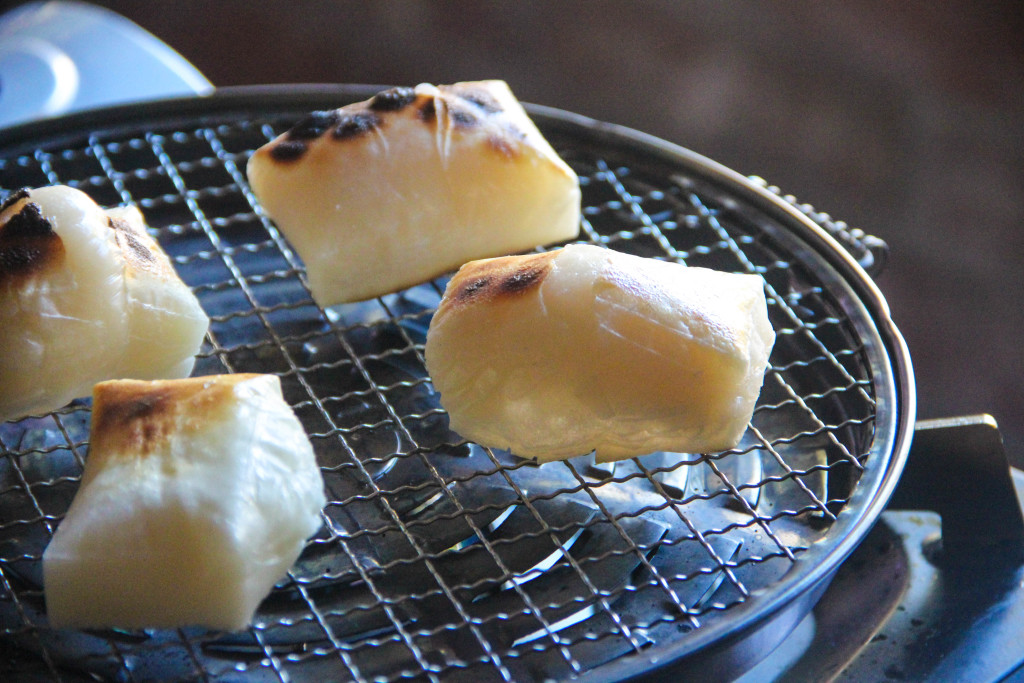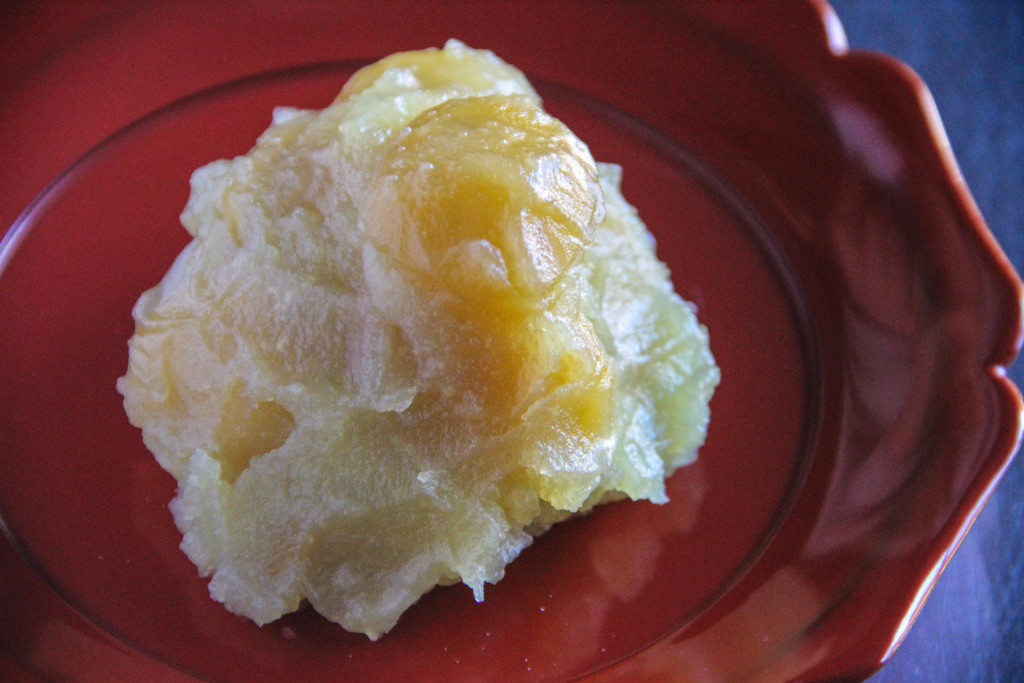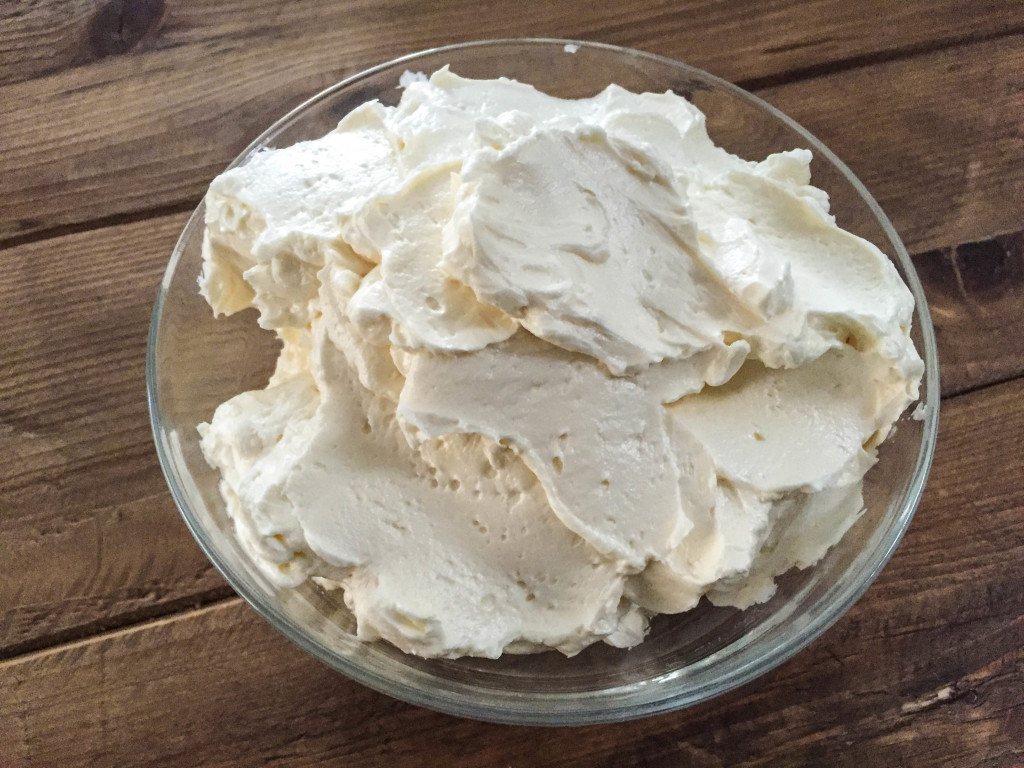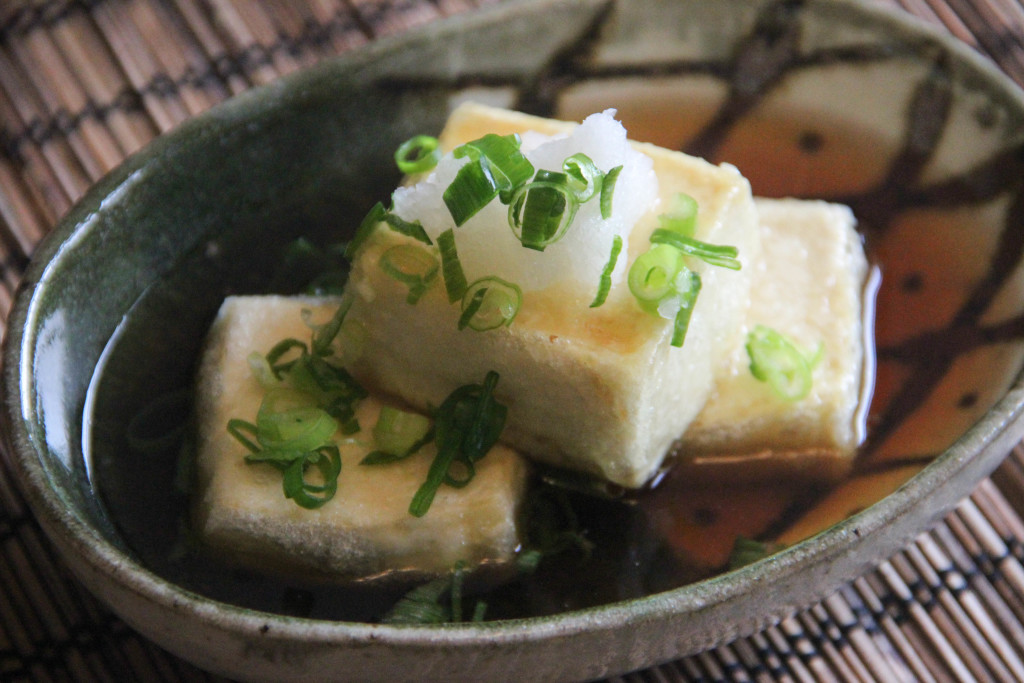Nabeyaki Udon is an Udon soup dish that is cooked and served in an individual clay pot. It is this signature clay pot (nabe) that gives this dish its name – Nabeyaki.
Futomaki is a kind of sushi roll or maki sushi with a variety of fillings such as vegetables and seafood. It is much thicker than typical sushi rolls such as Tuna and Cucumber Rolls, and the fillings are often cooked and flavored. Seasoned sushi rice and filling of choice are rolled into a thick cylinder with a sheet of nori roasted seaweed.
Kaki Gohan is seasoned rice cooked with oysters. Oysters are one of the most popular foods that is in season during winter in Japan. The juice from the shellfish is packed with Umami (savory flavor) and is absorbed into the rice while cooking. In this dish, you don’t just enjoy oysters themselves but also the wonderful oyster-flavored rice.
Mochi is rice cake that is made from pounded rice. It is very glutinous and sticky when cooked. Mochi doesn’t have very much flavor by itself other than a rice taste. It is often eaten during the new year holidays as people get lots of Mochi for the dish Ozoni. However, Ozoni is not the only way to eat Mochi, and actually, you could eat in any way and anytime through out the year if you wish.
Datemaki is an egg dish, a bit like sweet Tamagoyaki but cooked with fish cake. Datemaki is a part of Osechi Ryori, the traditional Japanese new year feast. There are a lot of kinds of dishes for Osechi Ryori, but Datemaki is prominent among them for its bright color and interesting shape. Datemaki is fairly sweet like some other Osechi Ryori so that it can last for at least the first 3 days of the new year
Kuri Kinton is sweet chestnuts mixed in mashed sweet potatoes. It is a part of Osechi Ryori, the traditional Japanese new year feast. There are a lot of kinds of dishes for Osechi Ryori, and Kuri Kinton is one of the most popular dishes for kids as it is sweet like a dessert.
The Buche de Noel cake comes from an old European tradition of burning a huge log at the winter solstice to end the year and bring good luck, and later during the Christmas season to celebrate Christmas. It’s a little unclear when exactly people started making cakes instead of burning giant logs, but it seems to be connected to houses and fireplaces becoming smaller. The French name and the use of thinly rolled sponge cake points to 19th century France. In any case, at some point, people started to replace their wood yule logs with delicious cakes and now everyone can enjoy them!
Japanese Buttercream (バタークリーム) is pretty much like European buttercream. Soft butter is mixed into a sweet meringue with flavoring such as vanilla or liqueur. Buttercream cakes used to be very popular in Japan. Ever since whipped heavy cream cakes emerged in the 1970s, though, buttercream cakes were eclipsed and have become next to nonexistent today. That may be because Japanese people tend to like lighter and less sweet cakes, and they think buttercream cakes are overly sweet and heavy.
Agedashi Tofu (Agedashidofu) is deep-fried Tofu blocks in savory Dashi sauce. It is one of the most popular appetizers at restaurant bars in Japan, but also a great home-cooking dish. Freshly fried Tofu in a very hot, soup like sauce will warm you up in a cold season.
